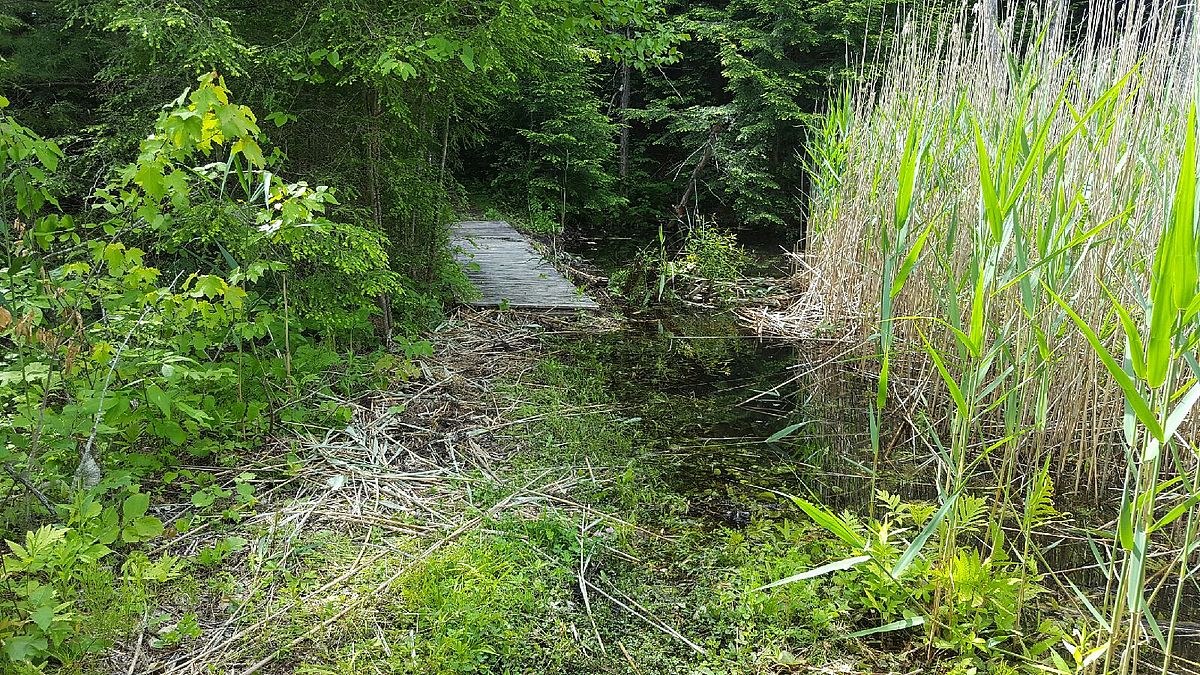Beavers at Bob's Way
UPDATE (10/01/2016): The flooding at Bob’s Way has been addressed with a “beaver deceiver” funded by the Nion Robert Thieriot Foundation through the MSPCA (Massachusetts Society for the Prevention of Cruelty to Animals).
Our latest close encounter with Castor canadensis (that’s fancy-talk for “beavers”) comes at Bob’s Way in Monterey.
The animals have dammed the wetlands at the western end of Royal Pond on Route 23, flooding our trail in the process.
Hikers: Conditions change frequently. Be prepared to get your feet wet, or to turn around just a few steps after setting out from the trailhead.
Philosophically, the beaver’s habits charm us. Running out of food—or living room—at one site, they’ll move up- or downstream to another spot with plenty of food (tree bark, mostly) nearby. When the food runs out, the beaver abandons the site and moves on. Tenure depends on food supply. Beavers create beautiful wetland habitat. Animals like wood ducks, herons, moose and bear all benefit. Beaver ponds can serve to slow down and filter run-off, reducing downstream sedimentation and siltation.
On the other hand, in the wrong spot their engineering can drown or damage trails, driveways, roads, fields and forests.
At Steepletop and Steadman Pond, Berkshire Natural Resources Council has installed so-called “beaver deceivers”—water flow devices that keep beaver ponds at a manageable depth without endangering the animals themselves.
The Massachusetts Society for the Prevention of Cruelty to Animals has for many years provided funding to support the installation of these devices in Western Massachusetts. Learn more about beavers and grant funding for beaver deceivers.
Is this the solution for Bob’s Way? It may be. If you visit the property, let us know what you see.

